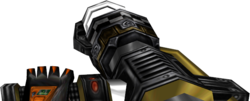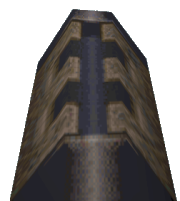Difference between revisions of "Flamethrower (Classic)"
(→Trivia) |
|||
| Line 32: | Line 32: | ||
*The ''[[Quake Team Fortress]]'' Flamethrower uses the same model as the [[Grenade Launcher (Classic)|Grenade Launcher]] and [[Pipe bomb Launcher (Classic)|Pipebomb Launcher]]. | *The ''[[Quake Team Fortress]]'' Flamethrower uses the same model as the [[Grenade Launcher (Classic)|Grenade Launcher]] and [[Pipe bomb Launcher (Classic)|Pipebomb Launcher]]. | ||
| − | *The Flamethrower in Team Fortress Classic once used a Gluon gun model (from HL1)during development. | + | *The Flamethrower in Team Fortress Classic once used a Gluon gun model (from HL1)during development. You can still make the Flamethrower a Gluon gun by simply replacing the "egon.mdl" file in your "tfc" folder with one obtained from a copy of HL1 (or its cache, if you can open GCF files). |
{{Classic_Weapons_nav}} | {{Classic_Weapons_nav}} | ||
{{Classic_Pyro_nav}} | {{Classic_Pyro_nav}} | ||
Revision as of 00:45, 27 June 2012
The Flamethrower is a weapon in the classic Team Fortress games and is only usable by the Pyro. It releases a stream of fire that can easily ignite any player, however it suffers from a lack of direct damage. To offset this, the Flamethrower deals additional damage over time due to afterburn. However, in Team Fortress Classic, it does not do much, because of decreased burn rate and burn time from before.
Damage
20 per flame that hits the target; 2 point of "on fire" damage four times.
Note: in QWTF, the Flamethrower had a longer burn-time and faster burn-rate. In TFC, killing with afterburn takes greater efforts than in Quake Team Fortress, especially because of the reduced speed of afterburn.
Gallery
Trivia
- The Quake Team Fortress Flamethrower uses the same model as the Grenade Launcher and Pipebomb Launcher.
- The Flamethrower in Team Fortress Classic once used a Gluon gun model (from HL1)during development. You can still make the Flamethrower a Gluon gun by simply replacing the "egon.mdl" file in your "tfc" folder with one obtained from a copy of HL1 (or its cache, if you can open GCF files).
| ||||||||||||||||||||||||||
| ||||||||||||||



